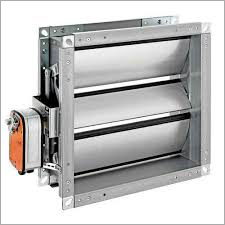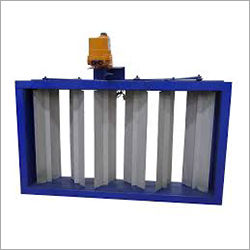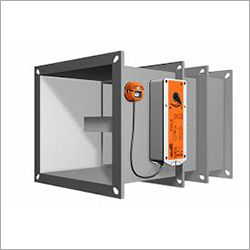Call : 08071931611
Volume Control fire Damper

X
Volume Control fire Damper Price And Quantity
- 220.00 - 290.00 INR/Square Foot
- 450-750 INR/Square Foot
- 10 Square Foot
Volume Control fire Damper Trade Information
- 1000 Square Foot Per Week
- 7-15 Days
Product Description
Volume Control Fire Damper is a critical safety component installed in HVAC (Heating, Ventilation, and Air Conditioning) systems to prevent the spread of fire and smoke through ductwork and air distribution systems. It is a motorized damper designed to automatically close when triggered by a fire alarm or smoke detection system. By sealing off the ductwork, the Volume Control Fire Damper restricts the passage of flames and smoke, limiting fire damage and protecting occupants' safety in commercial and industrial buildings.
FAQ:
Q: How does a Volume Control Fire Damper work?
A: Volume Control Fire Damper is normally open, allowing airflow to pass through the ductwork during normal operation. When a fire alarm is activated or smoke is detected, the damper's actuator receives a signal to close immediately. The damper blades shut, effectively blocking the passage of air, fire, and smoke, thus preventing the spread of flames to other parts of the building.
Q: What is the purpose of a Volume Control Fire Damper?
A: The primary purpose of a Volume Control Fire Damper is to compartmentalize HVAC ductwork, preventing fire and smoke from spreading through the ventilation system. By isolating the affected areas, the damper helps contain the fire and provides safe evacuation paths for building occupants.
Q: Where are Volume Control Fire Dampers commonly installed?
A: Volume Control Fire Dampers are typically installed in HVAC systems of commercial buildings, hospitals, schools, hotels, and industrial facilities. They are strategically placed in ducts that pass through fire-rated barriers, such as walls and floors, to maintain the integrity of these barriers during a fire event.
Q: Are Volume Control Fire Dampers code-compliant and certified?
A: Yes, Volume Control Fire Dampers must comply with strict building codes and regulations to ensure fire safety in commercial and industrial buildings. They undergo rigorous testing and certification to meet industry standards, ensuring their reliability and effectiveness during fire emergencies.
Tell us about your requirement

Price:
Quantity
Select Unit
- 50
- 100
- 200
- 250
- 500
- 1000+
Additional detail
Mobile number
Email
Other Products in 'Fire Damper' category
 |
YASHICA ENGINEERING
All Rights Reserved.(Terms of Use) Developed and Managed by Infocom Network Private Limited. |
 Send Inquiry
Send Inquiry


